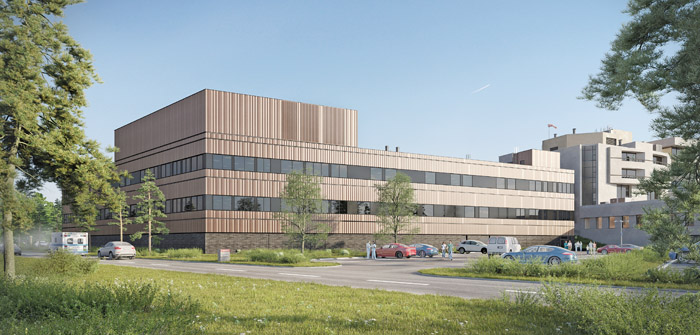(SCMC | Renderings by MOTIV, courtesy NBBJ)
Over the past few years, Oregon has exceeded the national average of growth in bellwether sectors such as construction, healthcare and technology. Will 2019 continue modest growth in these sectors, and how will the Central Oregon region fare?
Data illustrates this: overall, wages are strong and stable statewide.1 With our local population of 228,000 (the sixth-fastest growth market in the U.S.) and positive net migration, Central Oregon is a business-friendly region with relatively low business tax rates and diverse economic strengths in healthcare, biotech, construction, technology and recreation/tourism.2
About eight percent of our local workforce is employed in construction and the building trades.2 As a community, we are ready and poised for positive growth. We’re in a sweet spot, so there’s a reason to be optimistic about development.
On the national scene, data analysts3 prescribe the maturing of the economic expansion of the past four years, and the national rate of growth for constructions starts overall is expected to hover around three percent. Concerns remain regarding the increased cost of materials. Spending is expected to continue to increase for financed schools, public infrastructure, and transportation. Nationally, healthcare construction may make a partial rebound, and hotel and retail construction may slow somewhat.3
Central Oregon is well integrated, and expansion in one community often benefits the region as a whole. We expect to see continued investment in schools, transportation, healthcare access and technology. Employment rates are increasing and poverty rates are decreasing. Household incomes are strong and high, based on historic figures.1
In Oregon, the construction sector in 2017 and 2018 was the undisputed leader for the state’s employment growth, showing an eight percent overall increase and adding as many as 7,900 jobs.1 Oregon workforce experts project the construction workforce will increase by almost 17,000 jobs between 2017 and 2027.4 We can confirm these predictions by watching key indicators, such as new construction investment and permit application.
We have reason to be excited about the continued strength in the built environment in 2019 and beyond. Specifically, public and institutional infrastructure will stay strong with expected expansions and new construction at the OSU Cascades Campus and the emerging high school in the Bend-La Pine School District. Additionally, the growth in services and access at St. Charles Health System and its network of nearly 100 clinics will ensure much needed modernization, space enlargements and technology upgrades necessary to deliver modern care and services. Lastly, the investment in data centers near Prineville continues providing consistent work for hundreds of craft personnel.
An ongoing growth opportunity for the construction sector is intensifying our focus on engaging younger, soon-to-be workers in school-to-work training collaborations. Partnering with Central Oregon Community College and industry colleagues, we are investing time and energy to provide vocational training and jobs to new high school graduates. This early career education will help meet the labor demands of today and in the future. Mentoring opportunities support the community and business growth goals, and helps us find solutions to the already tight labor market.
In the construction industry, we are bullish on Central Oregon’s labor market and expansion in the built environment.
Sources:
1State of Oregon Office of Economic Analysis: oregon.gov/das/OEA/Documents/forecast1218.pdf
2EDCO: edcoinfo.com/wp-content/uploads/2018/10/2018_profile_100818.pdf
3National – Construction.com: construction.com/news/new-construction-starts-2019-steady-with-2018-dodge-data-analytics-oct-2018
4State of Oregon Employment Department: qualityinfo.org/-/oregon-s-future-workforce-needs-job-growth-to-2027-by-industry





